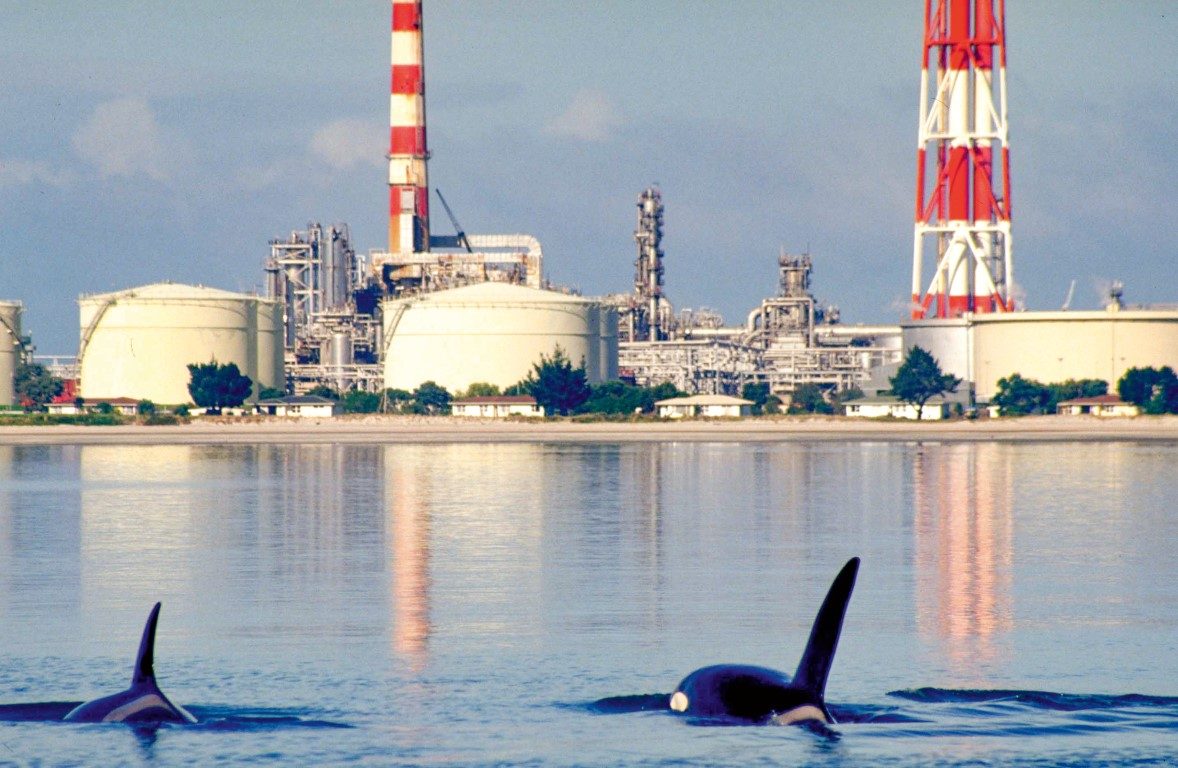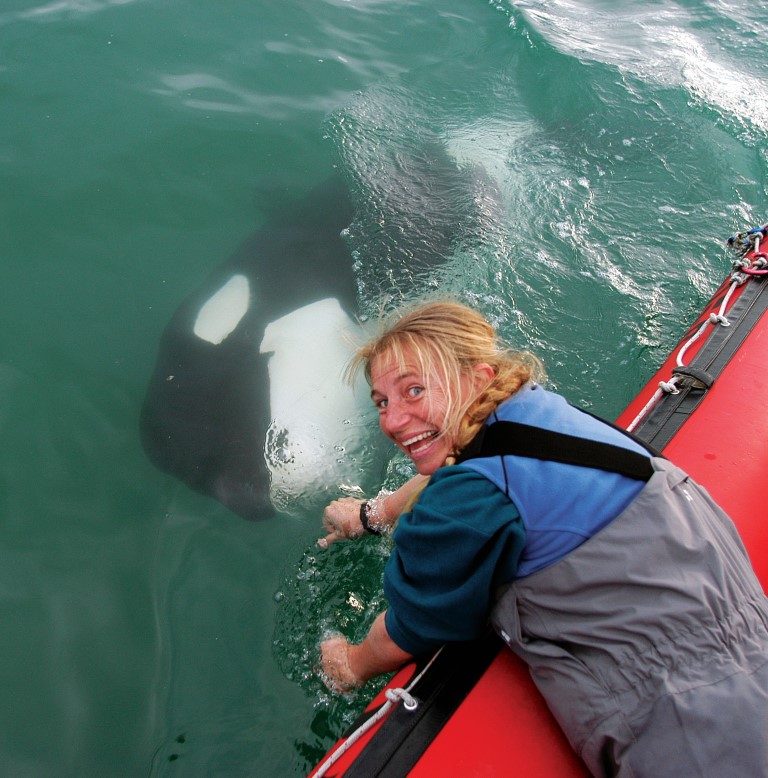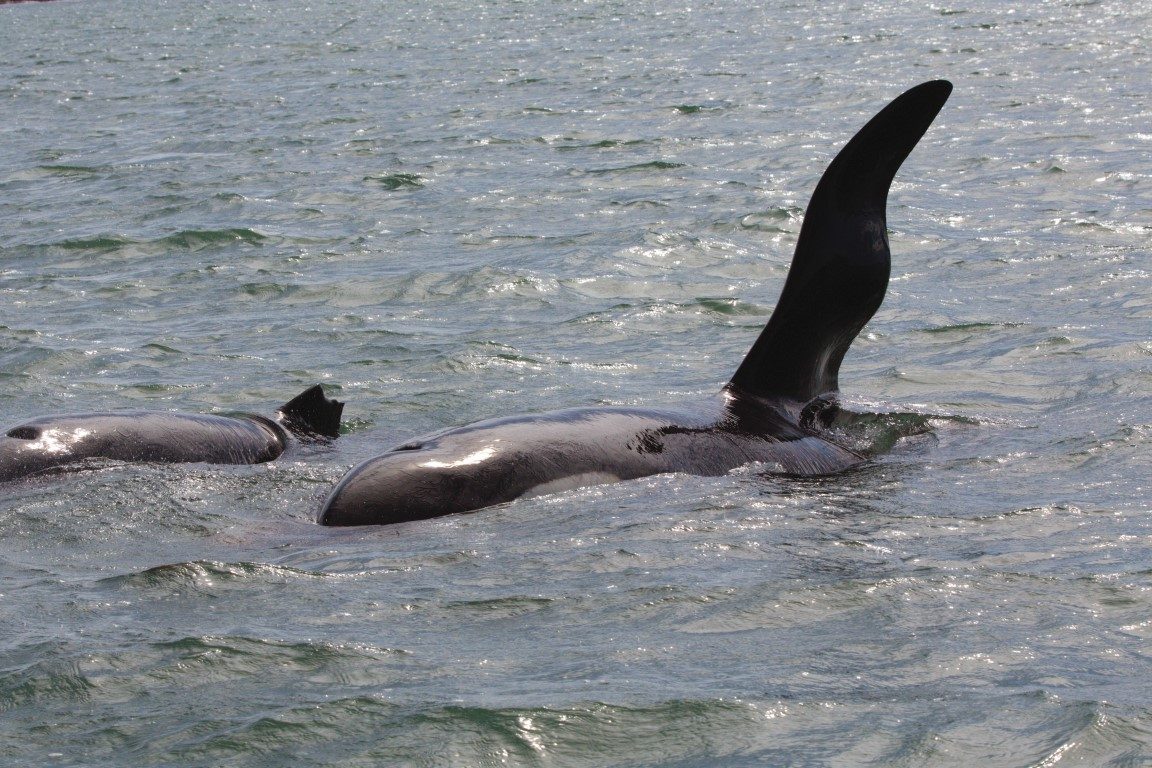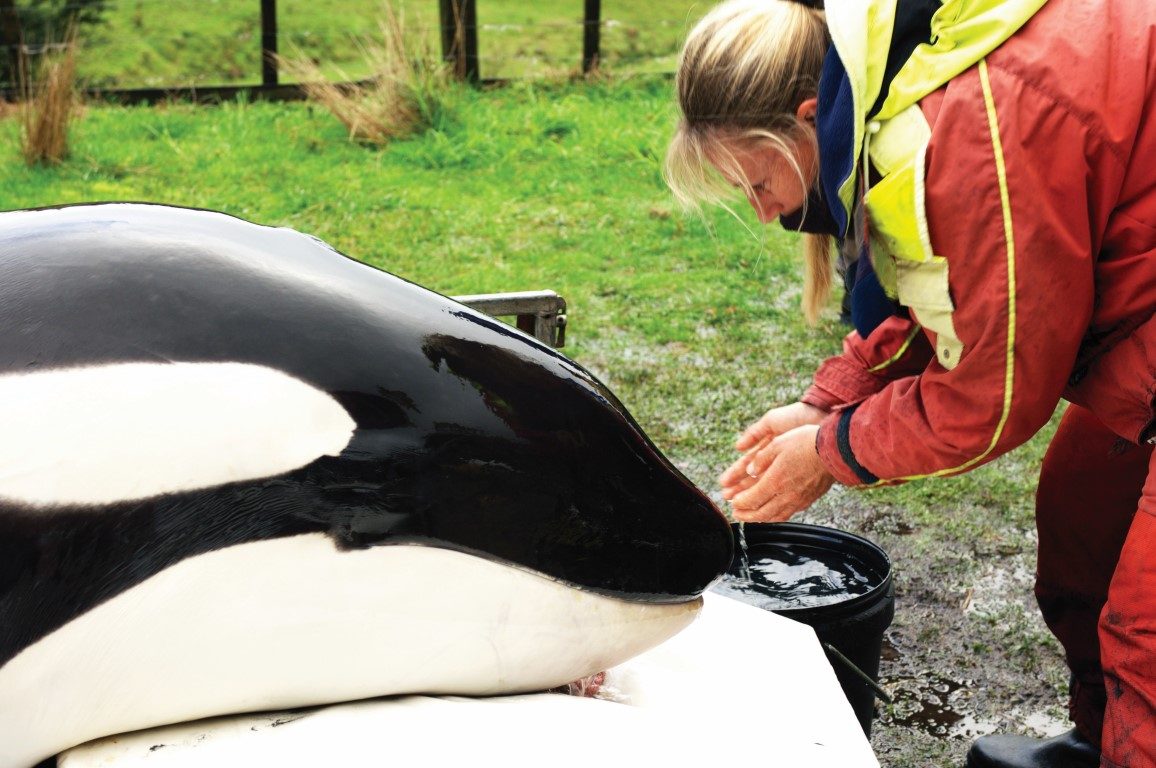

Spend ten minutes talking with Dr Ingrid Visser and you’ll want to save every orca in the ocean. Story by Lindsay Wright.
Since completing her doctorate on orca (the first scientific study of the mammals in New Zealand) in 2000, she’s been hard at work doing just that.
“We’ve got fewer than 200 New Zealand orca – a South Island population, North Island population and one that travels around both islands. And then there are the pelagic orca which are typically found way offshore, but which visit every so often,” she says, “to hunt for dolphins near our coastline. The more I learn about them – and the more time I spend with them – makes me realise just how little we know.
“But we’ve got to stop using the ocean as a great toilet and get rid of the belief that you can dump everything into it and it just disappears. Some New Zealand towns still flush raw sewage straight into the sea.
“New Zealand orca carry the highest concentrations of chemical pollutants among marine mammals in the Southern Hemisphere. DDT, PCBs, flame retardants, agricultural chemicals – you name it – and as orca are at the top of the food chain, they get it all.”

One probable reason, she says, is that their preferred diet is rays, particularly the liver. “Rays are shallow water feeders. Their diet is filter feeders like pipis and cockles which are prone to ingesting pollution. That, in turn, becomes concentrated in the rays’ liver.”
New Zealand orca also have the highest recorded numbers of boat strike injuries. “There’s a huge number of Kiwis out on the water at this time of year, and many of them aren’t too familiar with the law about the conduct of vessels around marine mammals.” (see sidebar page 35) Visser’s parents immigrated to New Zealand from the Netherlands in the 1950s and she was born in Lower Hutt in 1966. “Dad decided my sister Monique and I should visit the Netherlands to have a look and meet relatives,” she recalls. “He decided it was crazy expensive to fly the whole family there – so he bought a yacht and we sailed.”
That yacht was the 17m steel ketch Wai-O-Tira and the trip back to Europe developed into a 50,000 nautical mile, four-year cruise that touched on 40 countries around the world.
“I’m really grateful to Mum and Dad for doing that trip,” she says. “It taught me independence and how to shoulder responsibility. When you’re on watch on your own at night in the middle of the ocean, you’re aware that you have the lives of your family in your hands.
“At sea, nothing comes easy – you have to work for it. You have to strive towards a goal and just keep going. Many people grow up now without seeing the horizon – just acres of buildings – but at sea all you have is the horizon – it trains you to be open-minded.”

Her early hero was Dian Fossey, the American zoologist who studied gorillas in Rwanda for many years and Visser’s father gifted her a book by teenage solo sailor Robin Lee Graham which was also inspirational. “It reinforced the idea that you could shape your own destiny.” But most of all she gained a deepseated passion for the ocean and the creatures within it.
Back in New Zealand, she worked in an aquarium and began studying marine biology. At the New Zealand launch of the David Attenborough book Trials of Life, she was entranced by the cover photo of orca launching themselves on to an Argentinian beach to grab sea lions.
“How do I get there?” the would-be biologist asked Attenborough. “Why don’t you look at doing it here?” the venerable author replied, and the die was cast. She began spending time with New Zealand’s own orca – painstakingly cataloguing individuals and their behaviour.
“We began with zero in the database,” she laughs, “and I must admit I struggled with some pompous, paternalistic academics who scorned our public-citizen-science sightings.”
She found that orca often stayed in the family pod in which they were born, had highly individual personalities and their own distinctive culture. The big mammals were distinguishable by marks and scars on their dorsal fin and the shape of the grey saddle marking on their backs.

In 1997 she obtained a 5.8m Naiad RIB to get closer to her subjects and it’s powered by a 90hp four-stroke Yamaha outboard. How fast does it go? “I don’t really know,” she laughs, “I’m more interested in going slow around the animals. It’s very quiet – I can idle alongside them and you’d hardly know it was running.” But the orca have come to know the boat and will swim by to say ‘hello.’
Many of the local orca have names, some chosen by school children – Pickle is missing the tip of her dorsal fin, while Funky Monkey has a kink in his dorsal fin. “They favour shallow waters like Whangarei Harbour,” she explains, “and as with all the dolphins, are born tail first and protruding so that they learn how to use their tail even before they leave the womb. Once born the young lie alongside the mother to suckle – which is difficult if there’s a lot of wave action, so they often seek sheltered waters to give birth.
“The loss of one female can have catastrophic consequences for a pod – the offspring stay with them for life. Young males typically don’t survive without their mothers and upon her death their whole social network becomes unstable.”
When a call comes in the small hours from the Orca Research Trust help line (0800 SEEORCA), Visser will leap out of bed, load the Naiad and head off to relaunch a beached orca.
The orca feed in shallow water so the odd stranding is an occupational hazard. “It’s a tremendous thrill getting one back in the water – the whole pod will typically be waiting offshore and they have a big reunion when the stranded animal rejoins them – lots of splashing and socialising. And you get a buzz out of seeing them swimming around years later.”

If there are no reported sightings of a particular animal for five years or so, she considers it a concern. If they still haven’t been seen for 10 years, they’re probably dead.
She urges crayfishermen to keep their pot lines as short as possible. “Many orca are lost by becoming entangled in pot lines and drowning.”
It’s not only the local orca that come under her aegis. She’s also helping the effort to free Morgan (www.freemorgan. org), a female orca being held at an aquarium in Europe. “It’s heart-breaking,” she says. “Captive orca are kept in tiny concrete tanks, too shallow for diving. They wear their teeth out chewing at the concrete in frustration. The dorsal fins on captive adult male orca just flop over – it’s awful. They end up in captivity because of money, so the simple way to help them is not buying tickets to any aquarium that keeps marine mammals in captivity.”
Wherever there’s orca – there’s Ingrid. She’s an internationally-recognised advocate for protecting orca against boat strike, marine pollution, habitat destruction and keeping the animals in captivity. She also lectures on small cruise ships, mostly in Antarctic waters, and advises on film projects – notably Jean Michel Cousteau’s award-winning Call of the Killer Whale. Her own autobiography is Swimming with Orca.
With her plaited blonde pony-tail and irrepressible grin she’s on site at many of the country’s whale strandings, urging teams of volunteers to greater efforts.
She has the easy manner and approachability of someone who has spent a career doing something they love. “It’s the orca,” she says. “They still amaze me every time I see them.”




